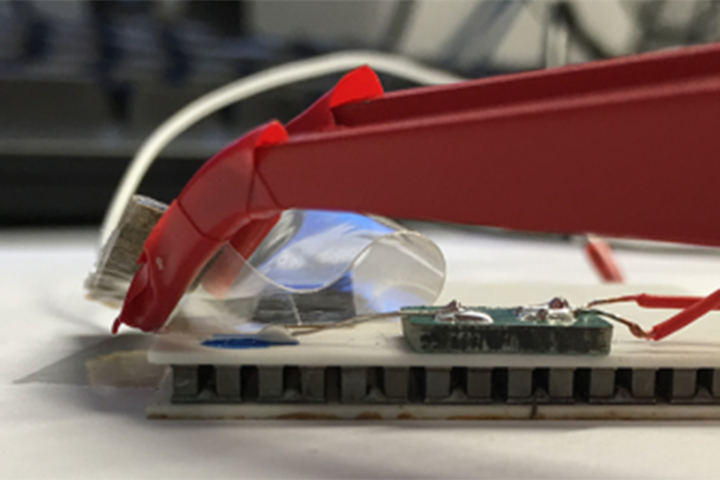
But a team of researchers from ETH Zurich and the California Institute of Technology have now designed a material that exceeds the sensitivity of human skin and even matches the sensitivity of the pit organ. Used as an artificial skin, the material may provide hypersensitive feedback for prosthetic and robotic limbs.
After studies showed that pectin (a substance found in plant cell walls and in kitchens as a gelling agent for jams) could be used as an artificial sensor, project lead Raffaele Di Giacomo from ETH Zurich began to test the substance further. Pectin proved to be a remarkable material for high-sensitivity sensors, but it was too rigid until Di Giacomo and doctoral student Luca Bonanomi developed a thin film of pectin only 100 micrometers thick.
The researchers have since demonstrated that this film can detect detect slight changes in temperature and is responsive in a broad range of temperatures, including the operational range of human skin.
To test the artificial skin, Di Giacomo and his team used a stuffed animal heated to 98.6 degrees Fahrenheit, the average body temperature of a mouse, and held it in front of the film. The material could detect the stuffed animal even at a few week away. “This demonstrated we have the same performance when you compare the snake membrane with our membrane,” Di Giacomo told Digital Trends. “If you measure the membrane of the snake and ours you have the same variation of electrical response and distance.”
“This is the first time that we’ve even exceeded the sensitivity of the human skin,” Di Giacomo added.
The researchers think their material will find applications in robotics and prosthetics, where it could be used as an artificial skin.
“It’s important for a person with a robotic arm to have complete sensory feedback from the artificial limb,” Di Giacomo said. “And it has been demonstrated that in order to move an arm correctly, sight is not enough. You need the sensory feedback from the limb.”
A paper detailing their work was published this week in the journal Science Robotics.


